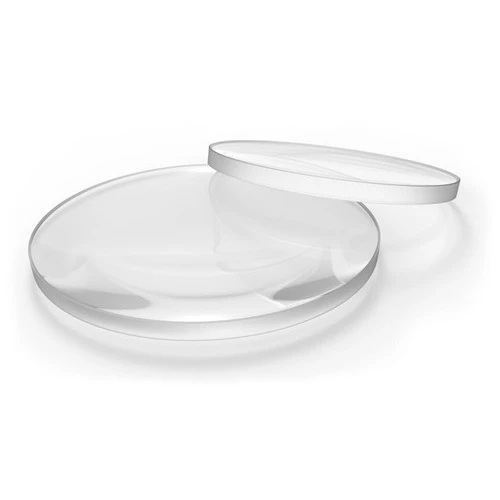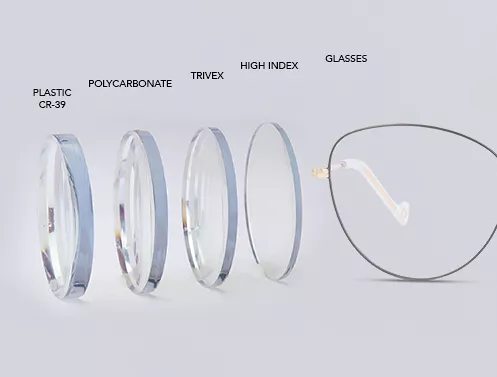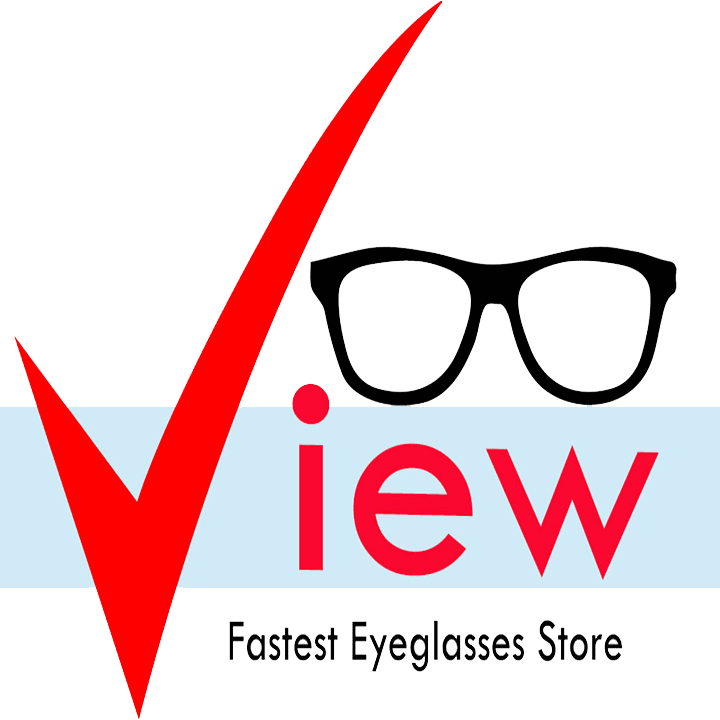Eyeglasses Lenses Materials
Eyeglasses Lenses Materials https://vieweyes.com/wp-content/uploads/2015/06/19387298_ml-1024x683.jpg 1024 683 jometry1 jometry1 https://secure.gravatar.com/avatar/7486e1f60e2e06f25469185dfc318e41?s=96&d=mm&r=g
Plastic lenses, also known as CR-39 lenses
Plastic lenses, also known as CR-39 lenses, are a popular choice for eyeglasses due to their many advantages over other types of lenses. However, they also have some disadvantages that should be considered when selecting eyewear.
Advantages of plastic lenses:
- Lightweight: Plastic lenses are lighter than glass lenses, making them more comfortable to wear for extended periods of time.
- Impact resistant: Plastic lenses are less likely to shatter or break upon impact than glass lenses, making them a safer choice for sports and other physical activities.
- Affordable: Plastic lenses are generally less expensive than other types of lenses, making them a popular choice for those on a budget.
- Easy to tint: Plastic lenses can be easily tinted to provide additional protection from the sun or to create a custom look.
Disadvantages of plastic lenses:
- Less scratch-resistant: Plastic lenses are more prone to scratches than glass lenses, which can affect their longevity and clarity.
- Less clear: Plastic lenses may not be as clear as glass lenses, particularly in higher prescriptions, which can affect visual acuity.
- Thicker: Plastic lenses may be thicker than other types of lenses, particularly in higher prescriptions, which can affect the appearance of the eyewear.
- Prone to distortion: Plastic lenses may cause more distortion, particularly in wraparound or curved frames, which can affect visual acuity.
In conclusion, plastic lenses offer several advantages over other types of lenses, including affordability, impact resistance, and lightweight. However, they also have some disadvantages, including lower scratch resistance, less clarity, and more distortion. It is important to consider these factors when selecting eyewear and to consult with an eye care professional to determine the best type of lenses for your individual needs and preferences.

Trivex lenses
Trivex lenses are a type of lens material that is designed to offer several advantages over other types of lenses. They are a popular choice for eyewear due to their lightweight, impact resistance, and optical clarity. However, they also have some disadvantages that should be considered when selecting eyewear.
Advantages of Trivex lenses:
- Impact resistant: Trivex lenses are highly impact-resistant, making them a popular choice for sports and other physical activities.
- Lightweight: Trivex lenses are lighter than glass lenses and comparable to polycarbonate lenses, making them more comfortable to wear for extended periods of time.
- Optical clarity: Trivex lenses offer excellent optical clarity and are able to correct vision problems such as nearsightedness, farsightedness, and astigmatism.
- UV protection: Many Trivex lenses come with built-in UV protection, which helps to protect the eyes from harmful UV rays.
Disadvantages of Trivex lenses:
- More expensive: Trivex lenses are generally more expensive than traditional plastic or glass lenses, which can be a drawback for those on a budget.
- Prone to distortion: Trivex lenses may cause more distortion, particularly in higher prescriptions or in wraparound or curved frames, which can affect visual acuity.
- Less scratch resistant: Trivex lenses may not be as scratch-resistant as other types of lenses, which can affect their longevity and clarity.
- Limited availability: Trivex lenses may not be available in all prescriptions or lens styles, which can limit the options for those with specific needs or preferences.
In conclusion, Trivex lenses offer several advantages over other types of lenses, including high impact resistance, lightweight, optical clarity, and built-in UV protection. However, they also have some disadvantages, including higher cost, potential for distortion, less scratch resistance, and limited availability. It is important to consider these factors when selecting eyewear and to consult with an eye care professional to determine the best type of lenses for your individual needs and preferences.
Polycarbonate lenses
Polycarbonate lenses are a type of plastic lens that are widely used in eyewear due to their many advantages over other types of lenses. However, they also have some disadvantages that should be considered when selecting eyewear.
Advantages of polycarbonate lenses:
- Impact resistant: Polycarbonate lenses are highly impact-resistant, making them a popular choice for sports and other physical activities.
- Lightweight: Polycarbonate lenses are lighter than glass lenses, making them more comfortable to wear for extended periods of time.
- Scratch resistant: Polycarbonate lenses are more scratch-resistant than plastic lenses, making them more durable and long-lasting.
- UV protection: Polycarbonate lenses offer 100% UV protection, which helps to protect the eyes from harmful UV rays.
Disadvantages of polycarbonate lenses:
- More expensive: Polycarbonate lenses are generally more expensive than plastic lenses, which can be a drawback for those on a budget.
- Prone to distortion: Polycarbonate lenses may cause more distortion, particularly in higher prescriptions or in wraparound or curved frames, which can affect visual acuity.
- Less clear: Polycarbonate lenses may not be as clear as glass lenses, particularly in higher prescriptions, which can affect visual acuity.
- Thicker: Polycarbonate lenses may be thicker than other types of lenses, particularly in higher prescriptions, which can affect the appearance of the eyewear.
In conclusion, polycarbonate lenses offer several advantages over other types of lenses, including high impact resistance, lightweight, scratch resistance, and UV protection. However, they also have some disadvantages, including higher cost, potential for distortion, less clarity, and thickness. It is important to consider these factors when selecting eyewear and to consult with an eye care professional to determine the best type of lenses for your individual needs and preferences.
High index lenses
High index lenses are a type of lens material that is designed to be thinner and lighter than traditional plastic or glass lenses. They offer several advantages over other types of lenses, but they also have some disadvantages that should be considered when selecting eyewear.
Advantages of high index lenses:
- Thinner and lighter: High index lenses are significantly thinner and lighter than traditional plastic or glass lenses, making them more comfortable to wear for extended periods of time.
- More attractive: High index lenses are thinner and more aesthetically appealing, which can improve the appearance of eyewear.
- Better optical quality: High index lenses are designed to provide better optical quality than traditional plastic or glass lenses, resulting in sharper, clearer vision.
- UV protection: Many high index lenses come with built-in UV protection, which helps to protect the eyes from harmful UV rays.
Disadvantages of high index lenses:
- More expensive: High index lenses are generally more expensive than traditional plastic or glass lenses, which can be a drawback for those on a budget.
- Prone to distortion: High index lenses may cause more distortion, particularly in higher prescriptions or in wraparound or curved frames, which can affect visual acuity.
- Less impact resistant: High index lenses may be less impact resistant than other types of lenses, which can be a drawback for those who engage in sports or other physical activities.
- Limited availability: High index lenses may not be available in all prescriptions or lens styles, which can limit the options for those with specific needs or preferences.
In conclusion, high index lenses offer several advantages over other types of lenses, including thinner and lighter design, improved optical quality, and built-in UV protection. However, they also have some disadvantages, including higher cost, potential for distortion, less impact resistance, and limited availability. It is important to consider these factors when selecting eyewear and to consult with an eye care professional to determine the best type of lenses for your individual needs and preferences.
- Posted In:
- Eye Exam & Eyewear
- Optometrist

Leave a Reply